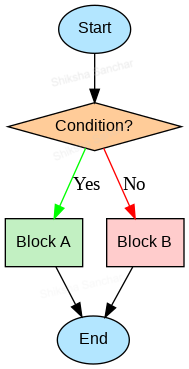Introduction to Control Flow Statements in Java
What are Control Flow Statements?
Control flow statements in Java determine the order in which instructions are executed in a program. Instead of running line by line from top to bottom, they allow your program to make decisions, repeat tasks, or jump between instructions based on certain conditions.
These conditions are often combined using logical operators like:
- && (AND): both conditions must be true
- || (OR): at least one condition must be true
- ! (NOT): reverses the condition
And relational operators like >, <, ==, <=, and >=.
This helps in writing complex decision logic.
Why are Control Flow Statements Important?
Control flow helps in:
- Making decisions – run different code based on conditions.
- Repeating tasks – loop through code multiple times.
- Breaking or skipping parts of code execution when needed.
Without control flow, Java code would just execute sequentially—no decisions, no loops, and no flexibility.
Types of Control Flow Statements in Java
| Category | Statements | Purpose |
|---|---|---|
| Conditional | if, if-else, if-else-if, switch | For decision making |
| Looping (Iteration) | for, while, do-while | To repeat a block of code |
| Branching | break, continue, return | To alter the normal flow of execution |
Basic Flowchart Understanding
Here's a simple representation of how decision-making works in control flow:

Real-Life Analogy
Imagine you're deciding whether to take an umbrella:
- If it's raining → Take an umbrella.
- Otherwise → Don't take it.
In code:
if (isRaining) {
System.out.println("Take an umbrella");
} else {
System.out.println("No need for umbrella");
}Summary
- Control flow statements decide what to do next in your program.
- They help implement logic, repetition, and choices.
- Relational operators like ==, >, <, <=, and >= are used to compare values, while logical operators like &&, ||, and ! are often used to combine multiple conditions.
- Java provides three major categories: Conditional, Looping, and Branching.